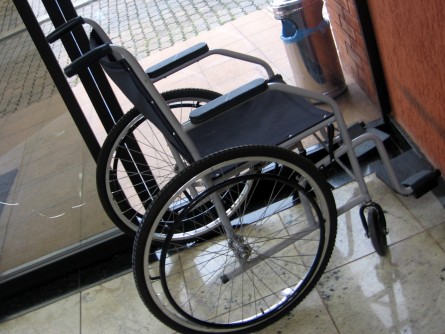The idea for the school began during a trip she made to the home of Nelson Mandela, when she learned from him about the state of poverty and education in the country. She pledged $10 million to a school. She told Forbes, "When you go to Nelson Mandela's house, what do you take? You can't bring a candle." So this $10 million present for her host started off with much fanfare ten years ago. A swimming pool, an art gallery, an auditorium that feels like a "Broadway theater" turned the place into a dream for the 150 girls whose families earn less than $950 a month.
In 2007, word got out that one of the dorm parents had molested several of the girls. Oprah went to the school immediately and cleaned house, firing the head of the school and every residential staffer. What's most interesting about the story is how Oprah describes her mistakes. First, she blames herself for having what the magazine describes as "an oversensitivity to local culture." Oprah told Forbes, "The thing that held me up for a long time was people would say, 'That's not the African way,' or 'That's not culturally appropriate.' I'd say, 'Well, you know, I would think that people should show up on time and be dressed appropriately.' I was trying to balance what I felt was the right thing versus not interfering with whatever was the cultural norm."
It was a balancing act that did not work, ultimately. She wanted the children at the school, the "Oprah Winfrey Leadership Academy for Girls" to succeed. And that success could not just be relative to other South Africans or other poor South Africans or other blacks South Africans. Oprah has "dictated that her faculty -- the vast majority of whom are South Africans, of all races -- not allow the girls' often tragic upbringings to cloud their missions." Anne van Zyl, the headmistress of the school, says, "This is something you'll find the world over when people are dealing with children from disadvantaged backgrounds: Anything is good enough. Oprah stands for . . . I mean, the brand is compassion, excellence, all those other things. She takes no prisoners. If I write an e-mail to Oprah, I'll get someone to check I haven't made a typo."
The "soft bigotry of low expectations," to borrow a phrase, has doomed many of the most well-meaning educational enterprises. But because of Oprah's own background as a child who grew up in poverty and experienced her own personal tragedies, she knows that lowering the standards does not help these kids. As she is taking the first group of the school's graduates shopping for school supplies here in the U.S. -- among other schools, the girls are starting at Wellesley and Spellman this fall -- she says, "I just realizes. Oh Jesus, this actually happened."
It happened not because someone decided these girls are exceptional -- though no doubt they are -- but because their teachers and their benefactors treated them like other students. The message was that no matter your background you need to figure out how to overcome it . And as much as it is important to have compassion for them, lowering standards because of culture or personal circumstances would only hurt them in the long run.






1 thought on “What Oprah’s school taught her about philanthropy”